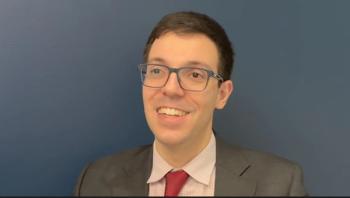
Tackling Logistical and Socioeconomic Challenges in Blood Cancer Care
Modification of REMS programs may help patients travel back to community practices sooner, according to Suman Kambhampati, MD.
Ahead of the 2025 Immune Cell Effector Therapy Congress, Suman Kambhampati, MD, spoke with CancerNetwork® about strategies for overcoming barriers to treatment access among patients with hematologic malignancies, particularly among tertiary care facilities. He discussed these considerations in the context of a panel discussion he attended at the meeting titled “Access With CAR-T and Bispecifics.”
Initially, Kambhampati highlighted distance to a tertiary care facility, access to specialized care, and other socioeconomic barriers as some of the primary obstacles to administering treatment with novel chimeric antigen receptor T-cell therapies and bispecific antibodies. He noted that resources such as the Fisher House Foundation may help with arranging lodging for patients who seek access to treatment and that modifications to initiatives such as the Risk Evaluation and Mitigation Strategies (REMS) program ease the burden of traveling between community and tertiary care practices.
Kambhampati is an associate professor of medicine and director of Kanas University-Veterans Affairs (VA) integration and infrastructure development in the Division of Hematologic Malignancies and Cellular Therapeutics of the Department of Internal Medicine at The University of Kansas Cancer Center.
Transcript:
The University of Kansas is the premier tertiary care facility for the entire state of Kansas and western orbit of Missouri. Between the University of Kansas and—let’s say, Denver, Colorado—there’s a lot of real estate. Kansas and Missouri happen to have [many] rural populations, and so...the classic barriers are distance to a tertiary care facility, access to specialized care, [and] socioeconomic barriers. For instance, we have several patients who have economic challenges in traveling all the way to Kansas City. We arrange for travel through nonprofit organizations in the VA setting. We reach out to our traveling volunteers to pick them up and bring them over here. Plus, we also have resources like the Fisher House [Foundation] and others to house these patients for these types of treatments.
The good thing that has happened lately is that with the modification of the REMS program, these patients do not need to be at a tertiary care facility or near a tertiary care facility for as long as a month or two. Now that is approximately 14 days, and then they can head back to their community [doctors]. In a nutshell, the biggest barriers are the distance, socioeconomic challenges, and access to specialized care at remote and rural sites.
Newsletter
Stay up to date on recent advances in the multidisciplinary approach to cancer.






















































































